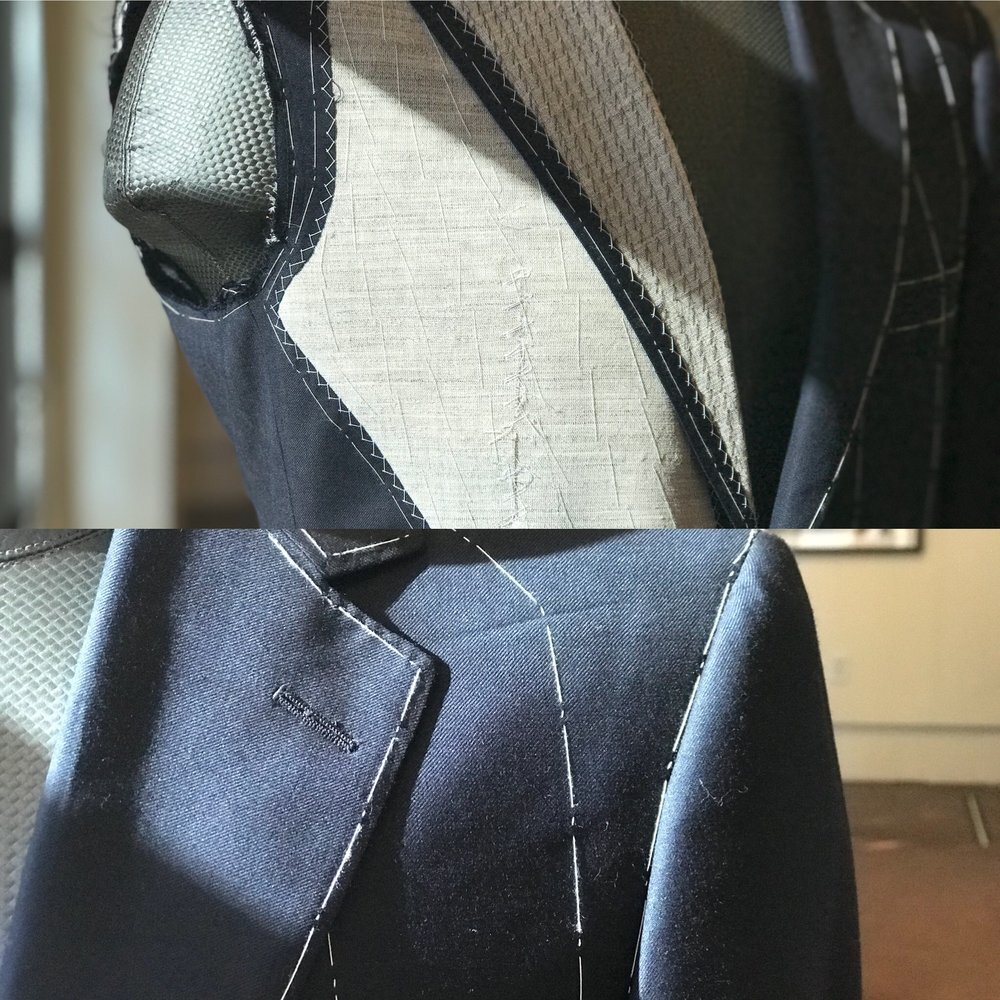Tailor Tuxedos Perth: Custom Tuxedos for Unique Events
Wiki Article
Understanding the Tailoring Process: From Fabric Option to Final Suitable for the Perfect Closet
The customizing process is a complicated interplay of art and science, starting with the vital decision of textile option and culminating in the precise changes of final fittings. Each material type brings one-of-a-kind top qualities that influence not only the visual appeal yet likewise the garment's longevity and viability for various celebrations.Significance of Fabric Choice
Choosing the appropriate material is essential in the customizing process, as it straight influences the convenience, sturdiness, and overall aesthetic of the final garment. The choice of textile sets the structure for the garment's performance, functionality, and style. Various textiles possess special residential properties, such as breathability, stretch, and weight, which can dramatically influence exactly how the garment drapes and fits the body.
A customized item made from a suitable fabric not just showcases craftsmanship but also boosts the wearer's self-confidence. Subsequently, comprehending the nuances of textile choice is paramount for any kind of tailoring endeavor. It ensures that the last product not just meets the visual desires of the customer but additionally aligns with useful requirements, consequently attaining a harmonious equilibrium between kind and function in the customized wardrobe.
Types of Fabrics and Their Usages
Comprehending the numerous sorts of textiles available is crucial for making educated decisions throughout the tailoring process. Each textile possesses distinct qualities that determine its viability for particular garments and celebrations.Its adaptability permits it to be customized right into everything from t-shirts to gowns. Its all-natural flexibility aids garments keep shape over time.
Silk exhibits high-end and is lightweight, making it best for eveningwear and fragile shirts; nonetheless, it calls for mindful handling as a result of its fragility. Linen, with its textured finish, is a popular choice for warm climates, offering a crisp and airy feel, but it wrinkles easily, which may affect the garment's appearance.
Artificial textiles, such as polyester and nylon, deal durability and resistance to creases, making them ideal for day-to-day wear and energetic clothes. Recognizing these material types and their residential properties permits much better decision-making, making sure that each tailored piece not just fits well yet additionally lines up with the intended purpose and celebration.
The Tailoring Strategies Explained
The art of customizing counts on a range of techniques that change textile into well-fitted garments. Central to this process is pattern composing, where a dressmaker creates templates based upon the client's measurements and wanted style. This initial action makes sure that the garment will fit the user appropriately before any kind of reducing takes place.When patterns are established, reducing techniques enter play. Accuracy is paramount as errors can result in misfitting garments. Tailors frequently make use of different reducing techniques, such as single-layer reducing for intricate layouts and multiple-layer cutting for performance on conventional patterns.
Basting is another necessary technique, permitting tailors to momentarily stitch textile items together for a preliminary fitting (tailor tuxedos perth). This method offers the opportunity to assess the drape and overall silhouette before last sewing
Seaming techniques, including flat-felled joints and French seams, enhance the garment's resilience and aesthetic allure. Tailors likewise use techniques such as interfacing and cushioning to give structure and shape to particular locations, like collars and shoulders.
Lastly, completing strategies, bespoke tailor perth consisting of hemming and edge completing, make sure the garment's long life while providing a refined appearance. With each other, these strategies form the backbone of efficient customizing, causing splendid, tailor-made garments.

Suitable Changes and Considerations
After the initial customizing methods have been used and the garment is constructed, suitable modifications become paramount to attaining the ideal fit. These adjustments resolve different aspects of the garment, guaranteeing it contours to the wearer's physique and enhances total appearance.
The rise of trousers is another critical factor; it should sit comfortably over the hips without creating pain, enabling simplicity of motion. Hemming lengths for both pants and skirts should mirror the user's favored style while appreciating proportions.
Moreover, attention must be provided to the back of the garment, ensuring that there are no unsightly pulls or excess textile - top tailor perth. Each adjustment needs to be thoroughly thought about, as even small alterations can significantly influence the general fit and aesthetic of the customized piece, inevitably causing a wardrobe that exudes confidence and sophistication
Keeping Your Tailored Clothes
Proper upkeep of tailored garments is vital to maintaining their fit and appearance with time. To make sure longevity, routine cleaning is vital. Always comply with the care tag instructions, which may advise dry cleansing for delicate textiles or machine cleaning for even more long lasting products. Prevent constant laundering, as this can wear down the material and modify the garment's shape.Storage space is equally essential; usage cushioned hangers for jackets and layers to keep shoulder structure, and store trousers folded up nicely or hung to avoid creasing. Safeguard garments from straight sunshine, which can discolor colors and damage fibers.
Furthermore, regular assessments for minor repair services can stop larger problems. Look for loose buttons, tearing joints, or indications of moth damage, dealing with these problems quickly to maintain the garment's integrity.
Lastly, take into consideration seasonal turning. Using tailored pieces in small amounts permits materials to recuperate, extending their lifespan. By applying these upkeep techniques, you can guarantee that your tailored garments continue to be as excellent as the day you first used them, improving your optimal wardrobe for many years to come.
Conclusion
The customizing process, encompassing textile choice, experienced techniques, and exact fitting changes, plays a vital function in creating garments that improve both comfort and design. Each stage adds to the overall performance of the final item, ensuring that apparel not only fits well but additionally shows individual identification. Moreover, recognizing the significance of upkeep extends the life of customized garments, solidifying their worth in a well-curated closet. A thorough method to tailoring finishes in a polished and certain appearance.Report this wiki page